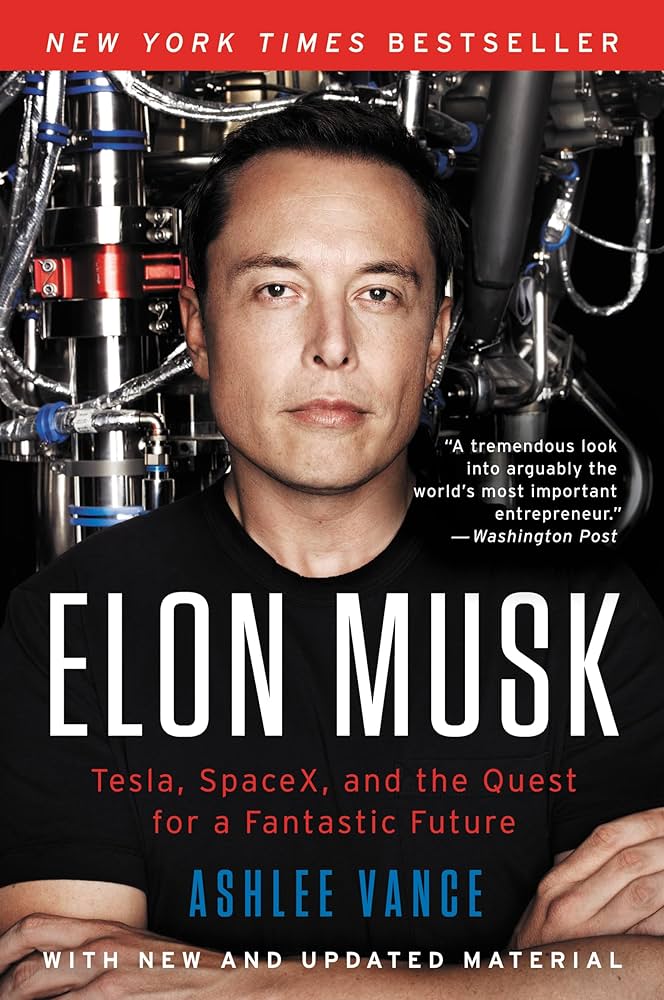
2017-03-01
NON-FICTION
|
Elon Musk: Tesla, SpaceX, and the Quest for a Fantastic Future
by Ashlee Vance
Publisher Note:
In the spirit of Steve Jobs and Moneyball, Elon Musk is both an illuminating and authorized look at the extraordinary life of one of Silicon Valley's most exciting, unpredictable, and ambitious entrepreneurs - a real-life Tony Stark - and a fascinating exploration of the renewal of American invention and its new makers.
Passage(s) of Note:
There were times Musk would overwhelm the Tesla engineers with his requests. He took a Model S prototype home for the weekend and came back on Monday asking for around eighty changes. Since Musk never writes anything down, he held all the alterataions in his head and would run down the checklist week by week to see what the engineers had fixed.
The same engineering rules as those at Space X applied. You did what Musk asked or were prepared to burrow down into the properties of materials to explain why something could not be done. He always said, take it down to the physics.
As the development of the Model S neared completion in 2012, Musk refined his requests and dissection style. He went over the Model S with Von Holtshausen every Friday at Tesla's design studio in Los Angeles. The building had a few offices and then one large wide open area where various mockups and parts awaited inspection. During a visit I made in 2012 there was one complete Model S, a skeletal version of the Model X, and as yet to be released SUV and a selection of tires and hubcaps against the wall.
Musk sank in the Model S drivers seat and Von Holtshausen climbed into the passenger seat. Musk's eyes darted around for a few moments and then settled onto the sun visor. It was beige and a visible seam ran around the edge and pushed the fabric out. "It's fish-lipped," Musk said. The screws attaching the visor to the car were visible as well, and Musk insisted that every time he saw them it felt like tiny daggers were stabbing him in the eyes. The whole situation was unacceptable. "We have to decide what is the best sun visor in the world, and then do better," Musk said.
We build almost everything in house. That is why the cost have come down. Davis, like Brogan and plenty of other Space X engineers, has had Musk ask for the seemingly impossible. His favorite request dates back to 2004. Space X needed an actuator that would trigger the gimble action used to steer the upper stage for Falcon 1. Davis had never built a piece of hardware before in his life and natually went out to find some suppliers who could make an electro-mechanical actuator for him. He got a quote back for $120,000. "Elon laughed", Davis said. "That part is no more complicated than a garage door opener. Your budget is $5,000. Go make it work."
Davis spent nine months building the actuator. At the end of the process he toiled for three hours writing an email to Musk covering the pros and cons of the device. The email went into gory detail about how Davis had designed the part, why he had made various choices and what its cost would be. As he pressed send, Davis felt the anxiety surge through his body knowing that he had given his all for almost a year to do something an engineer at another aerospace company would not even attempt.
Musk rewarded all of this toil and angst with one of his standard responses. He wrote back 'ok'. The actuator Davis designed ended up costing $3,900 and flew with Falcon 1 into space. I put every once of intellectual capital into that email and one minute later go that simple response. Everyone in the company was having that same experience. One of my favorite things about Elon is his ability to make enormous decisions very quickly.
|












